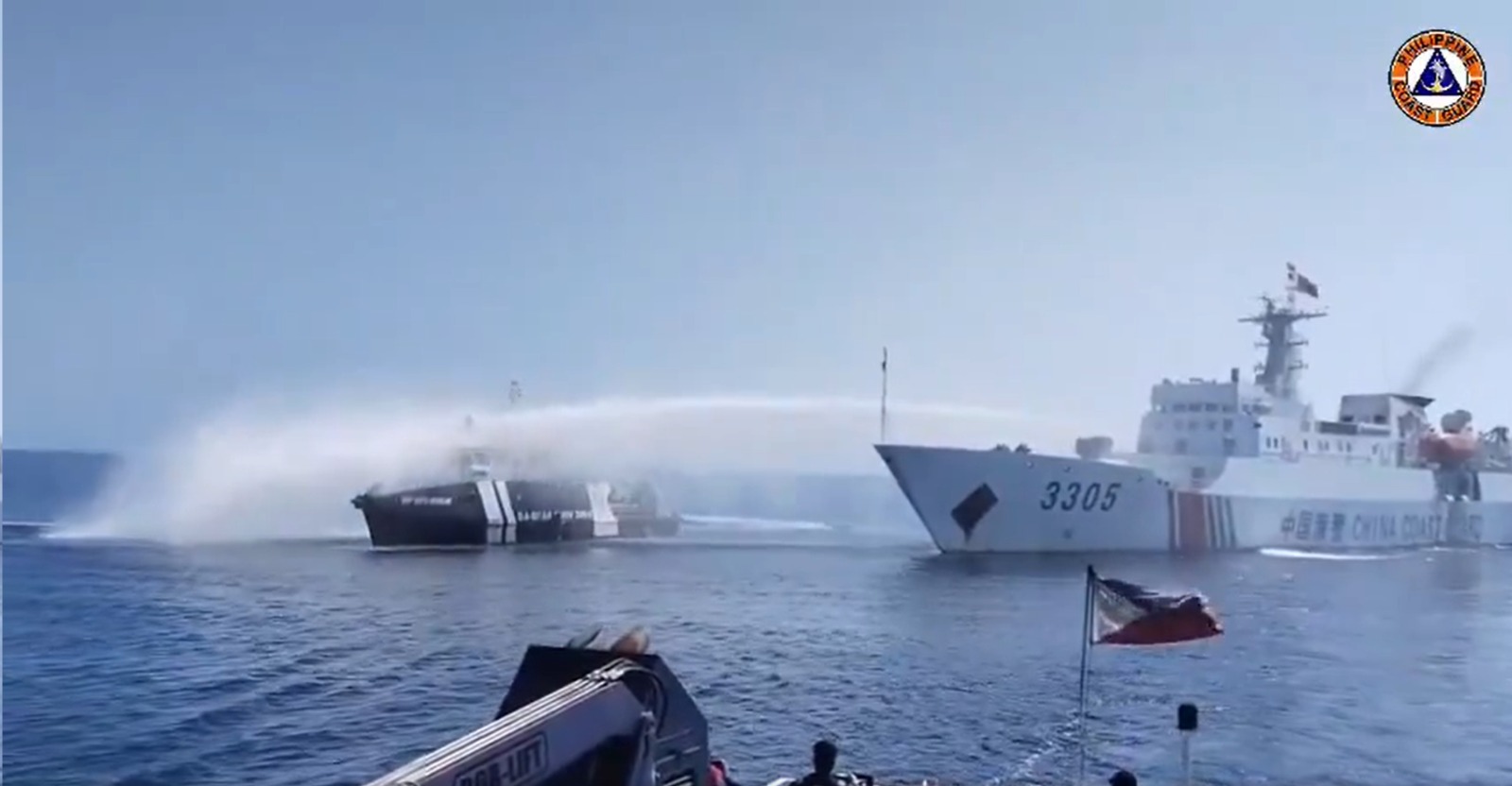In a significant development with potential ramifications for the volatile South China Sea (SCS) region, Chinese researchers claimed to have developed the world’s first “smart” water cannon, leveraging artificial intelligence (AI) technology.
Hong Kong-based SCMP claimed that the weapon, developed by the Wuhan Marine Electric Propulsion Device Research Institute, aims to revolutionize non-lethal combat strategies in maritime disputes.
The SCS has long been a focal point of tension, with multiple nations laying overlapping claims to its waters. China, in particular, has been assertive in its claims, often employing various means to solidify its control over the region.
Now, with the development of the AI-powered water cannon, Beijing appears poised to further bolster its maritime claims.
Traditional water cannons, while powerful, have been plagued by issues of accuracy, particularly in adverse sea conditions. However, the newly developed smart water cannon seeks to overcome these challenges by harnessing the capabilities of AI and advanced sensors.
Equipped with a photoelectric camera and motion sensors, the smart water cannon can automatically identify targets and adjust their power and trajectory in real-time. This feature allows the weapon to maintain precision even in rough seas, where conventional cannons often struggle to hit their mark.
In shooting experiments conducted by the Chinese research team, the smart water cannon demonstrated remarkable accuracy, with an error margin of only two meters, even under conditions of high winds and four-meter waves.
This represents a significant improvement of 33 to 54 percent compared to traditional automatic water cannons.
According to Cheng Bosen, the lead scientist behind the project and a prominent figure at the Wuhan Marine Electric Propulsion Device Research Institute, the AI-driven water cannon represents a significant leap forward in maritime technology.
With China viewing non-lethal weapons as vital tools in asserting control over disputed waters, the potential deployment of such smart water cannons could solidify its presence in disputed waters.
Nonetheless, the development of AI-enabled weapons, capable of precise targeting even in adverse conditions, also raises questions about the risk of accidents or unintended escalations in an already volatile region.
China’s Aggressive Water Cannon Tactics
Despite a 2016 international court ruling that invalidated China’s expansive claims in the South China Sea, citing the illegitimacy of its nine-dash line (the nine-dash line, also referred to as the eleven-dash line by Taiwan, is a set of line segments on various maps that accompanied the claims of the People’s Republic of China and the Republic of China in the South China Sea), Beijing has persistently ignored the verdict, forging ahead with the construction of artificial islands and military installations in disputed waters.
The Philippines, Brunei, Malaysia, Vietnam, and Taiwan contest China’s claims, which has caused recurrent stand-offs and confrontations.
In a troubling pattern observed over recent months, the Philippine Navy has faced repeated assaults from Chinese coast guard vessels equipped with water cannons.
These clashes have resulted in damage to Philippine naval vessels, with one particularly alarming incident involving a shattered cockpit windscreen and injuries to personnel.
At Second Thomas Shoal, Philippine sailors resorted to waving a white flag in response to the relentless barrage of water cannon fire, highlighting the asymmetrical power dynamics at play.

China’s use of water cannons aligns with its broader strategy of employing “gray zone” tactics: actions that fall below the threshold of traditional warfare but aim to assert dominance and control.
While non-lethal, the use of water cannons tests the boundaries of what constitutes an “armed attack,” potentially triggering international responses, particularly from the United States.
However, the disparity in military capabilities between China and smaller Southeast Asian nations like the Philippines mitigates the likelihood of direct military confrontation.
Recognizing the effectiveness of water cannons in exerting pressure without resorting to lethal force, China has invested heavily in developing and enhancing this technology.
Leveraging its expertise in infrastructure projects, particularly large-scale land reclamation and dredging operations, China has access to advanced water pump technology, which it has repurposed for military applications.
In 2022, China listed a water cannon with a range exceeding 100 meters in its export control catalog, consolidating its position as a dominant player in this arena.
Despite provocations, the Philippines has refrained from retaliating with water cannons, opting for diplomatic channels to address grievances. However, the persistent use of force by China raises concerns about the potential for further escalation.
It remains uncertain whether the newly developed AI-driven water cannon will debut in the South China Sea anytime soon, but its development could cause concerns regarding regional stability.
- Contact the author at ashishmichel(at)gmail.com
- Follow EurAsian Times on Google News




